Weird Things Cats And Dogs Do – And The Meanings Behind Them
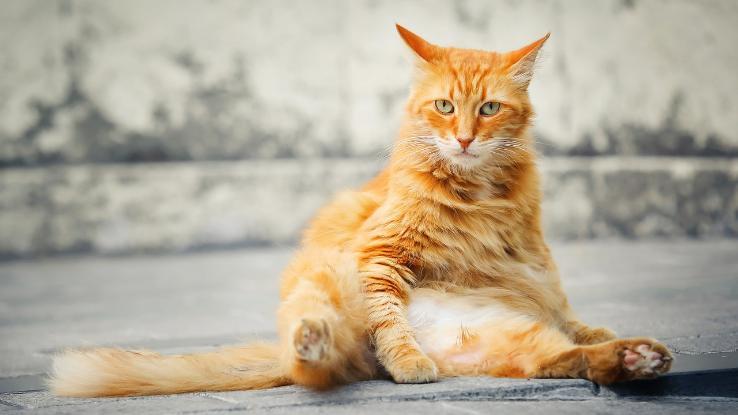
It’s adorable when your cat rolls over to show you her belly, but do you know why she does it? Pet behavior can be a total mystery – luckily, most of it has a perfectly reasonable scientific explanation.
As it turns out, a lot of your pet’s quirky habits come down to nothing more than evolution. Other behaviors (both cute and weird) have more serious ramifications. Here are 30 of your dog’s and cat’s most off-the-wall behaviors, and the reasons behind them.
Your Dog Bites Another Dog’s Nose
It’s not unusual to see one dog grab another by the muzzle. Whether it’s a friendly nip, or something more aggressive, it’s a completely natural behavior – and one you generally don’t have to worry about. While some experts say it’s social and others portray it as antagonistic, it really depends on the context.
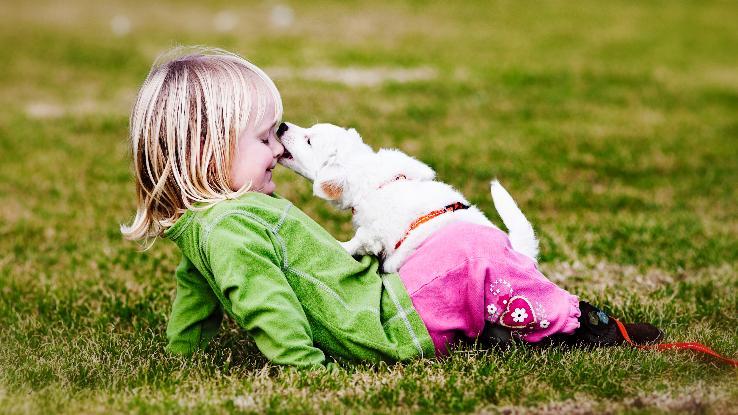
Muzzle grabs often begin in puppyhood, when the mama dog grabs her baby’s nose to discourage him from nursing. Later in life, adult dogs may grab each other’s noses during play or, sometimes, as a greeting. Less frequently, the behavior is used in low-key disputes, as a gentle way of saying, “Back off!”
Your Cat Sits In Boxes
Anyone who has a cat knows that they will happily squish themselves into any random container they see (bowls, bags, vases) – but they especially love boxes. Why do they love squeezing themselves into those tiny little spaces so much? Turns out, it can be chalked up to biology.
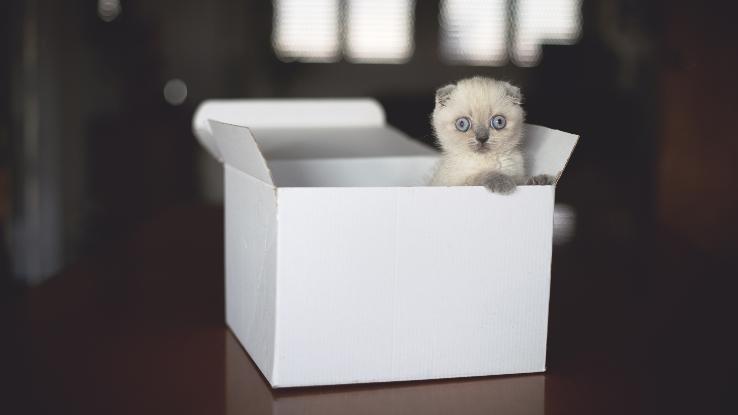
Back in the day, when your cat’s ancestors were still wild, they had to hide from potential predators. Tucking into a small, enclosed space was an ideal way to do that. Today, being inside a box gives your kitty a place to hide while he scans the area to see what’s coming at him. It’s his own little safe zone.
Your Dog Cocks His Head To One Side
Dogs do lots of cute things, but is anything more adorable than the head tilt? The doggy practice of leaning their head to one side has been the subject of internet memes and videos for years – people just can’t get enough! But is that quizzical look just a sign of confusion? Or is it something more?
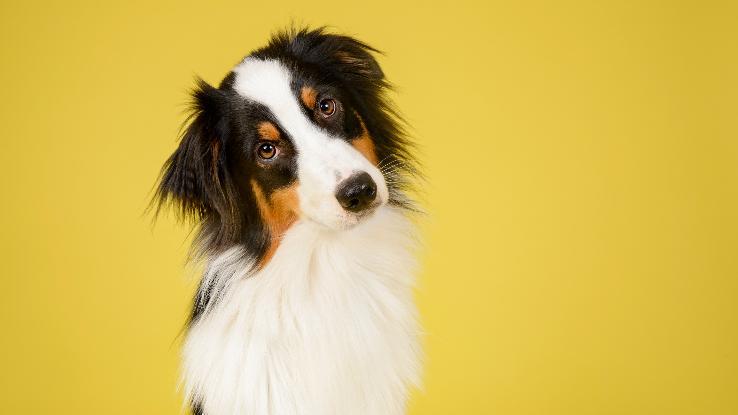
Much as you might have guessed, doggos tilt their heads from side to side because they’re trying to figure out what the heck is going on. Some experts suggest that the tilt indicates that your dog is trying to hear or see you better, while others say he’s expressing empathy for your situation.
Your Cat Opens His Mouth When He Smells Something
Nothing is funnier than when a cat smells something and suddenly curls back his lips in a look of apparent disgust. Turns out, however, that lots of animals display this behavior (called the Flehmen response), and it doesn’t indicate revulsion at all. When it comes to kitties, it’s actually another way of sniffing.
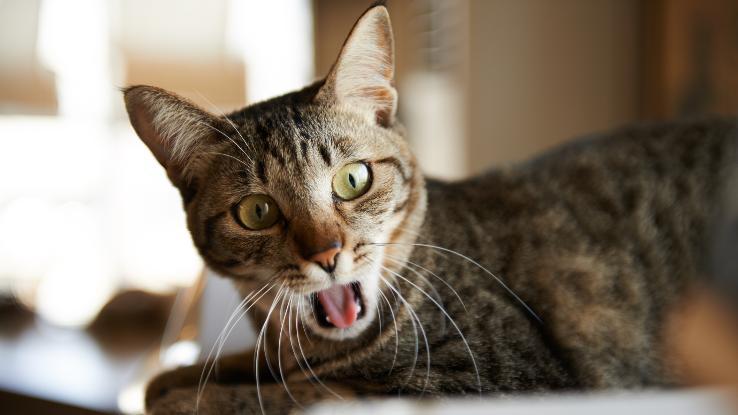
Cats can inhale air through their open mouths, opening up two small ducts right there on the roof. Those ducts go through the mouth and join up with the vomeronasal organ. In layman’s terms, the habit functions as another nose of sorts, blending the senses of scent and taste.
Your Dog Can’t Stop Yawning
People yawn all the time. We do it when we’re tired, when we’re bored, or even when we see someone else yawn (they’re contagious, you know). But when dogs yawn, is it for the same reasons? Not necessarily. As it turns out, dogs often use yawns as a calming signal.
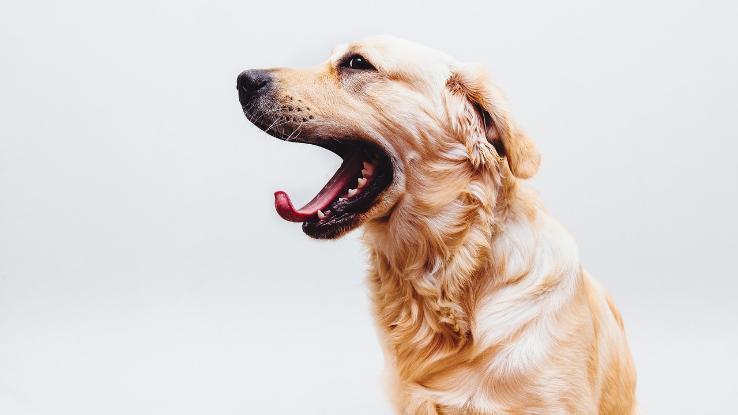
When you’re in the middle of a training session and your dog yawns, it’s his way of saying he’s done: He’s run out of patience and he’s ready to quit. It may also indicate stress or nervousness, or can even be used to quell excitement. And sometimes, of course, it does just mean that he’s tired.
Your Dog Licks Your Face
Some people love doggies kisses, others not so much. And can you blame them? Who knows where that tongue has been! While you may think your dog is just giving you a wet, messy greeting, he could actually be communicating any number of things. Turns out, that lick is a complicated communication tool!
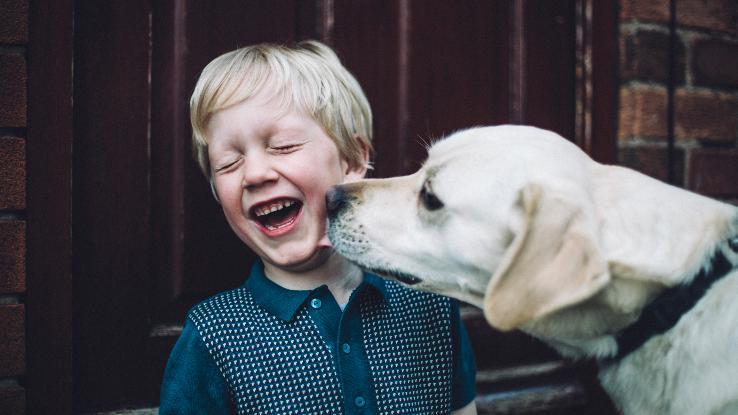
Licking is an instinctive canine behavior that can mean dozens of different things. When your dog licks your face, he could be trying to gather information about you, groom you, tell you he’s hungry, demonstrate respect, or tell you that he loves you. Of course, there is also the possibility that he just likes licking. You never can tell!
Your Cat Goes Crazy For Catnip
If you’ve ever seen your cat play with a toy filled with catnip, you’ve seen some fun feline antics. Why, though? What is it about that seemingly boring plant that makes your cat go absolutely bananas? The key lies in an oil the plant contains called “nepetalactone.”
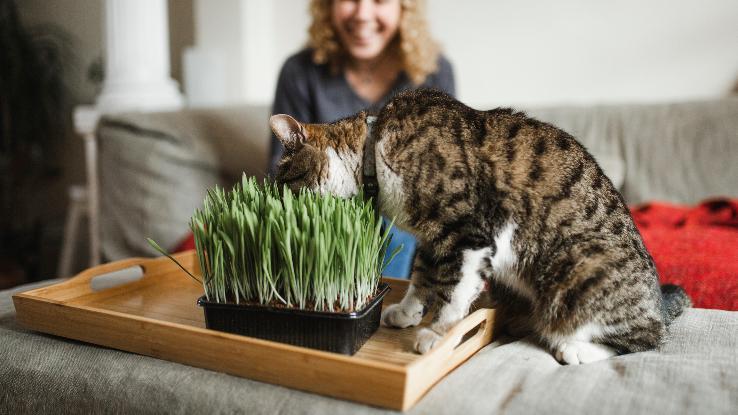
Catnip, which is actually a part of the mint family, grows wild all around Africa, Europe, Asia, and North America. Although the plant can be pretty potent in its natural state, most toys contain catnip that has been dried. When your cat smells the oils from the plant, it stimulates the receptors that detect pheromones – and your little guy just loses his cool!
Your Cat Acts Like He’s High
OK, sure. Your kitty smells catnip and thinks he’s smelling pheromones. But what’s the big deal? Well, the catnip creates a chemical reaction that gives the cat a sense of euphoria or extreme happiness. And, as it turns out, he is sorta high: The effect has been compared to hallucinogenic drug use in humans.
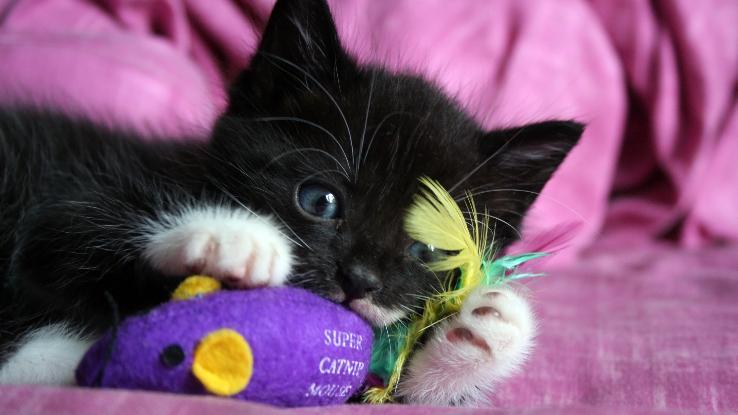
Not all cats react to catnip in the same way (some just don’t care), but those who have a strong reaction will often paw at it, roll in it, chew it, meow, growl, or even drool. The effects generally only last for a few minutes and then your cat will ignore the toy and walk away.
Your Dog Can’t Stop Panting
Sometimes, it’s obvious why your dog is panting. For example, it’s a hot day, he’s been running around, or he’s thirsty. Sometimes, it’s not so clear. Panting is a fairly typical doggie behavior, but if you can’t see a clear reason behind it, you may wonder if something is wrong.

Turns out, panting is more than a cooling mechanism. Heavy breathing can indicate a number of different things – much like it does in humans. When your doggie has his tongue hanging out, it can indicate that he’s excited, stressed, or uncomfortable, amongst other things. The key, as always, is being able to read the situation.
Your Dog Gets A Bath – And Then Shakes Water All Over The Place
If you own a dog, you know one thing is true: If he gets wet, you better take cover, or soon, you’ll be taking a shower of your own. If there’s one thing dogs LOVE to do, it’s to shake around like crazy the moment they get even a drop of water on their backs. What gives?
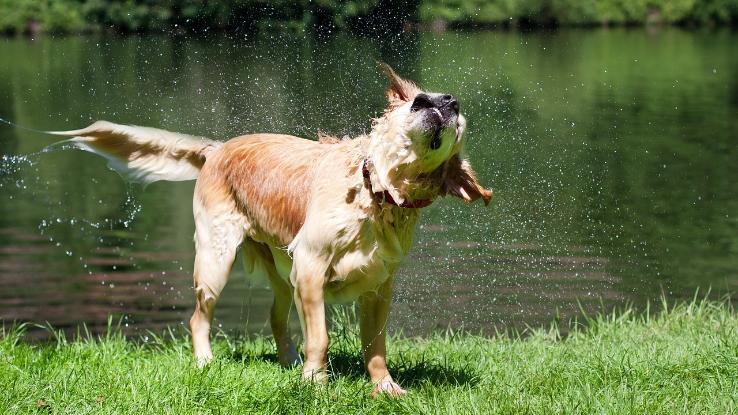
The science behind this one is simple: Your dog just doesn’t like to be wet! Wet coats lose their ability to retain heat, and a damp dog would have to use a lot of energy to maintain his temperature while air drying. The wet dog shake allows them to dispel 70% of the water in their coat in just four seconds.
Your Cat Scratches Everything
If there’s one thing cats love, it’s to scratch absolutely everything in sight. If you’re lucky, your little guy will be polite and stick to his scratching posts. If you’re not, everything from the walls, to the carpet, to your legs are in danger. Unfortunately, this is one behavior you’re not going to get rid of.
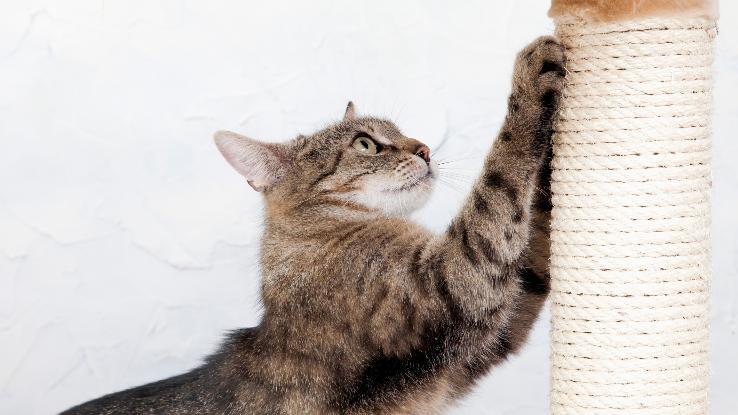
Cats scratch for many reasons – none of them because he’s a bad kitty. When your cat goes at the drapes, he may be trying to remove the dead outer layer of his nails, spread his scent, or flex his feet. Provide your kitty with scratching posts of all shapes and sizes to encourage appropriate scratching.
Your Cat Scratches Everything BUT His Scratching Post
You’ve given your cat countless scratching posts and toys, yet he continues to attack your sofa on a regular basis. Is he trying to make you angry? Not necessarily. Cats have personal preferences for texture and your couch may just be more appealing than those toys.
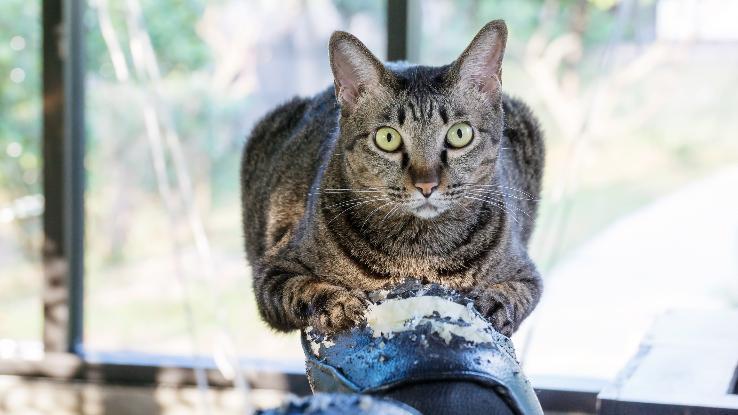
If you want to keep your cat’s claws off of the furniture, try covering off-limit spots with unappealing materials, like aluminum foil or double-sided tape. In addition, you can try spraying those areas with scents they don’t enjoy, like menthol. Of course, the best bet is to keep trying new toys until you find one your cat DOES like.
Your Dog Rolls Around In The Grass
Some people get super irritated when their dogs roll in the grass. After all, you don’t know what kind of gross stuff they could be getting on their fur (and tracking into your house). Your dog is hardwired to roll on the lawn, though, so there’s not much you can do about it.
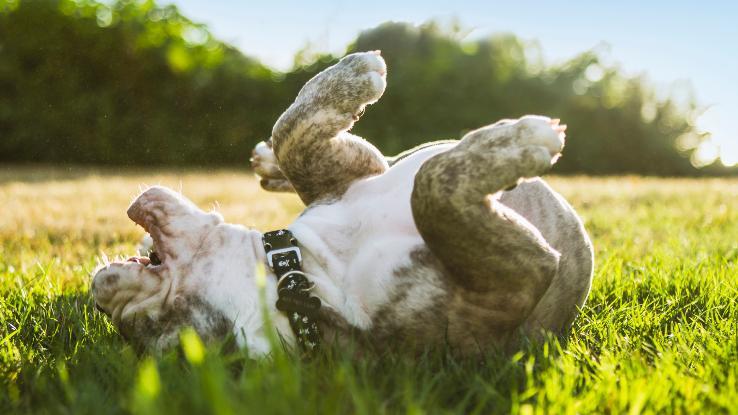
More often than not, the issue is that your dog smelled something really exciting and he wants to get that scent all over his body. Unfortunately, the scents he likes are usually really gross. What’s the appeal? Experts believe stinky odors might help your dog mask his own scent, keeping him hidden from prey.
Your Dog Is Trying To Get Something Off Of Him
While your dog often rolls in the grass to pick up a funky odor, sometimes it’s just the opposite: He’s trying to get an odor off of him. That’s right: Your dog hates the shampoo you use. Just because you find the scent of summer breeze highly attractive, that doesn’t mean your dog has to like it as well.
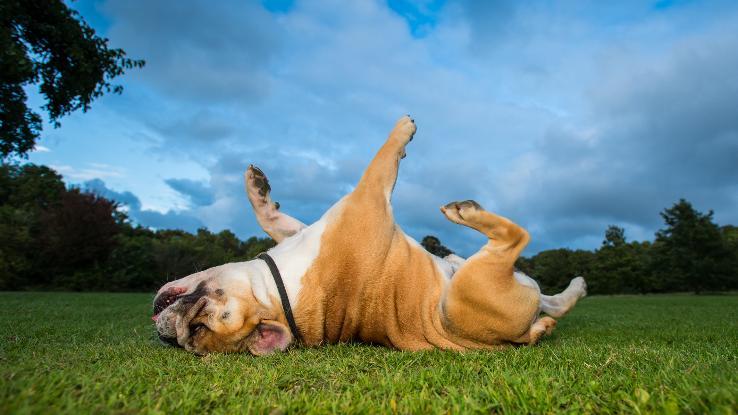
When you give Fido a bath with a particularly fragrant shampoo, he may want to get that scent off him as fast as possible. Rolling on a patch of grass might help to remove some loose fur – and the bothersome odor that’s attached to it!
Your Dog Eats Grass
Your dog is clearly a meat-eater, so you may be confused when you see him chowing down on the lawn. What gives? Is he really that hungry? Or is there something wrong with him? You’re not alone in your concern, especially if your dog is eating grass and then vomiting.
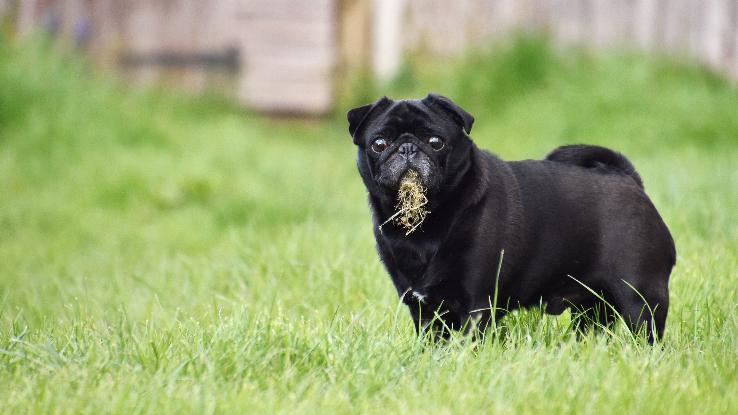
Eating things that aren’t technically food can indicate that your dog has a nutritional deficiency, but often it’s just boredom. Dogs eating grass, in particular, is a fairly normal behavior, and typically nothing to worry about. If you use pesticides or herbicides on your lawn, however, you’ll want to want to put the kibosh on your dog’s wayward munchies.
Your Cat Is Eating Grass
Dogs aren’t the only ones that like to chow down on the green stuff. On occasion, you’ll also see a cat going to town on the lawn. Are the reasons the same? Not really. When your cat eats grass, it’s not because he’s bored – he’s actually trying to make himself vomit.
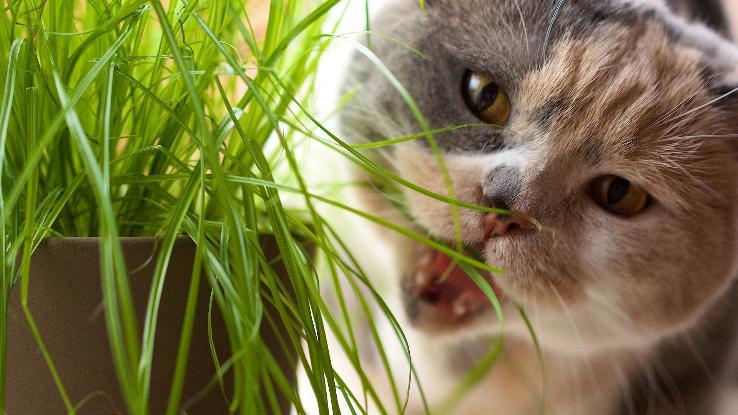
Cats lack the necessary enzymes to digest plant material like grass, so when they eat it, it comes right back up. While this may seem like worrisome behavior, it’s actually a good thing. When your kitty throws up grass, all of the other indigestible material in his gut comes up with it and he probably feels a lot better.
Your Cat Is Purring Non-Stop
Most people assume that when their cat purrs, it means she’s happy. After all, when your kitty is curled up in your lap, enjoying some chin scratches, she’s obviously content. But cats also use the purr to communicate fright, nervousness, and many other moods.
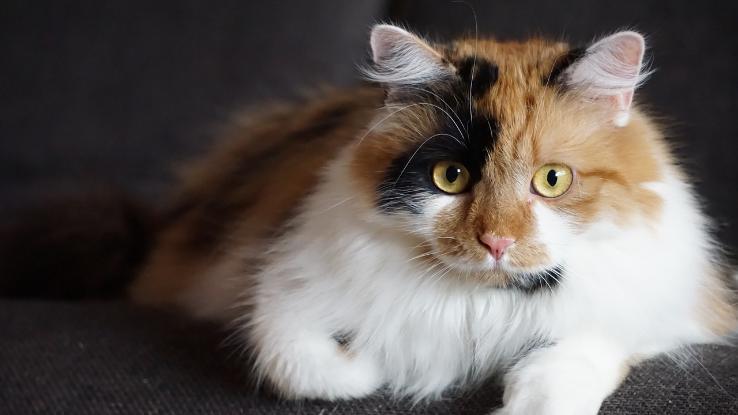
Cats purr to calm themselves in high-stress situations like going to the vet or giving birth. So, if your cat is purring all the time, it might indicate that something is wrong. Animal behavioralist, Desmond Morris, says that purring is “a sign of friendship— either when the cat is contented with a friend or when it is in need of friendship—as with a cat in trouble.” So, the moral here is to pay attention when your cat is purring.
Your Cat Brings You An Unwelcome Gift
Kitty cats love to leave little gifts. Sometimes it’s something sweet, like a leaf or a flower. But other times, it’s something horrible – like a dead mouse or a bird. Why would your cat feel the need to bring home that gory gift when she has a perfectly good bowl of kibble sitting right there in the kitchen?

Cats, innately, are hunters. Despite the fact that you keep kitty very well fed, she still has that natural-born killer instinct. Oddly, spayed female cats seem to bring home prey more often than other cats. Experts believe that they are acting out their natural role as mama and teaching you (the owner) how to catch mice.
Your Dog Follows You Into The Bathroom
Having a dog can be just like having a toddler: Neither of them lets you have any privacy. One of the worst things they do is to follow you into the bathroom and watch you sit on the loo when all you want is just a little bit of privacy. Why do they do that?
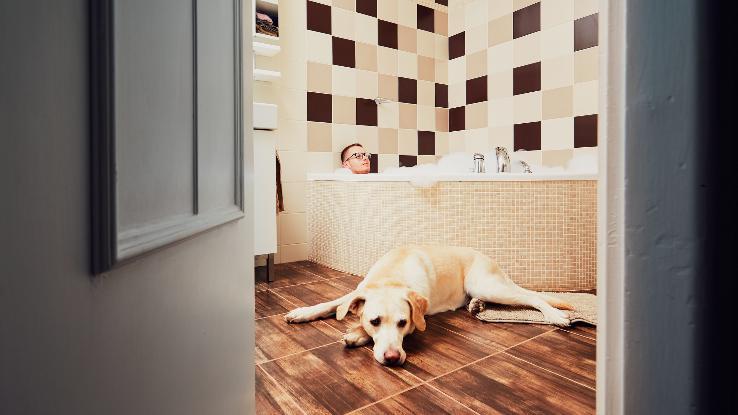
They’re really not trying to intrude on your private time. In fact, the concept of “privacy” isn’t something that dogs would ever be able to understand. Your doggo is a pack animal, and leaving him alone may make him feel vulnerable. By following you, he’s just trying to keep his pack intact.
Your Dog Won’t Stop Wagging His Tail
It’s commonly believed that dogs wag their tails to convey happiness and friendliness. And while that’s sometimes true, it’s not always the case. Dogs do use their tails to communicate, but it’s not necessarily a welcoming gesture. In fact, tails can be used to communicate many different emotions.
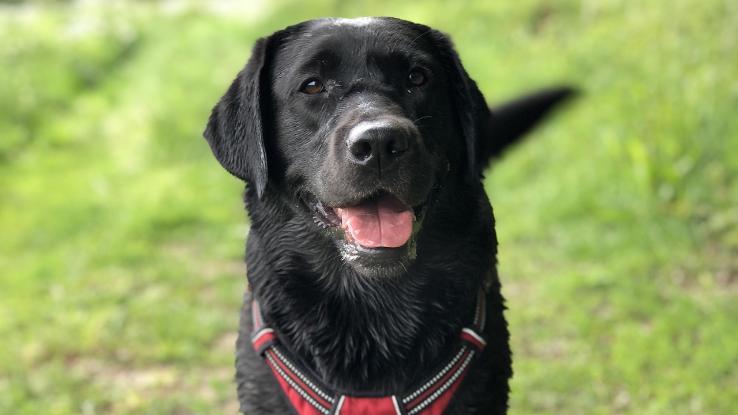
A wagging tail (rather than, say, one that’s just standing up) reflects excitement of some variety – and the greater the excitement, the faster the tail will wag. Of course “excited” doesn’t necessarily equal “happy.” Excitement can be the result of nervousness, fear, or even anger . . . so don’t take that wag as an invitation to reach out and say “hello!”
Your Dog Always Wags His Tail To The Right Or The Left
You thought you knew everything about your dog’s wag by this point, right? But did you know that their tail can lean to one side or the other? And it can mean different things if it leans to the left or the right? Researchers recently discovered that the way a dog holds his tail gives clues to what he’s feeling.
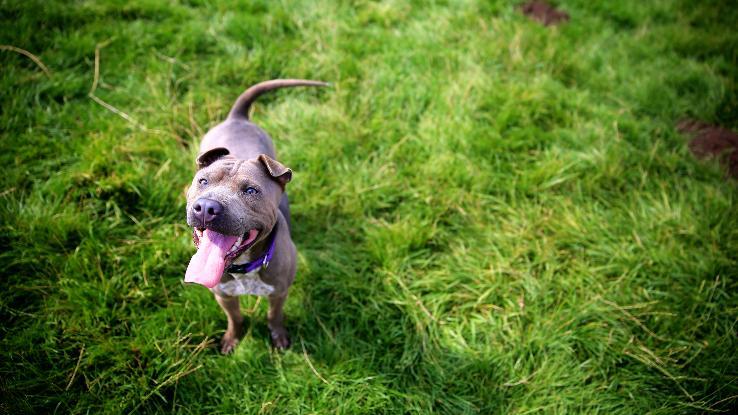
Specifically, a tail wagging to the left can indicate negative emotions, while a tail wagging to the right can indicate positive emotions. This comes back to the fact that the left side of the brain (positive feelings) controls the right side of the body, while the right side of the brain (negative emotions) controls the left side of the body.
Your Dog Holds His Tail Between His Legs
Of course, wagging isn’t the only way your dog uses his tail to communicate. There are dozens of different positions and motions that can be used to convey countless emotions. When your dog’s tail is in its natural position, for instance, it indicates that he’s feeling pretty chill. It’s all of the other motions that can get a little confusing!
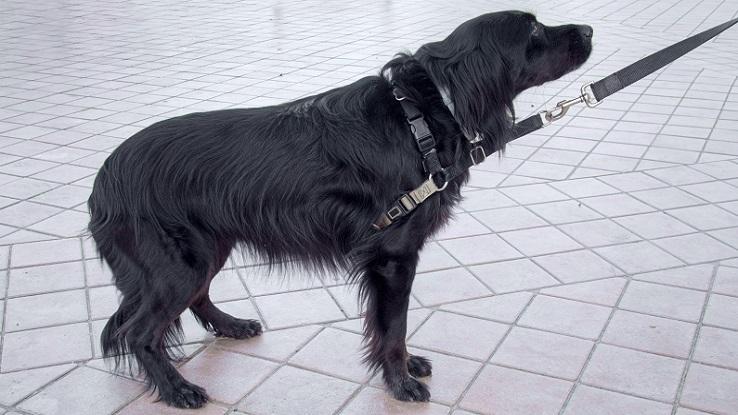
If your dog is holding his tail lower than natural position (wherever that is), it often indicates that he’s feeling nervous or afraid. A tail held straight out can mean that he’s curious, while a tail that’s held straight up can mean that he’s feeling aggressive. Understanding these clues is vital to your relationship with any canine.
Your Cat Holds Her Tail Straight Up In The Air
Much like dogs, cats will use their tails to communicate how they’re feeling. When your kitty holds her tail straight up in the air as she waltzes through the house, she’s expressing confidence and contentment. She rules the roost, and she knows it. Watch the tip of that tail – if it twitches, it means she’s especially happy.
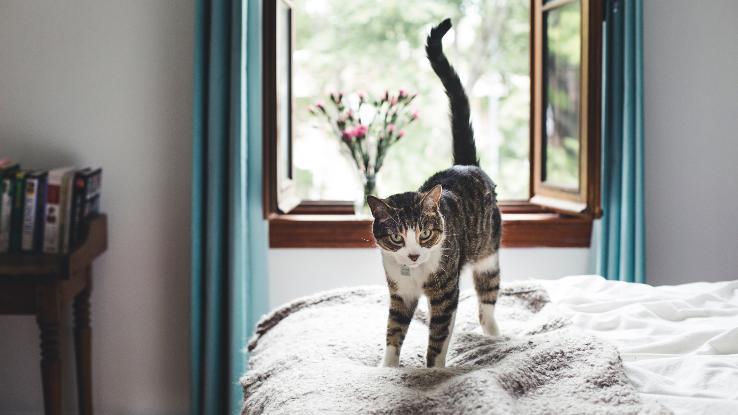
On occasion, you may notice that your cat’s tail is held up in the air, but curved – sort of like a question mark. When this happens, it might be time to take a play break! A curved tail indicates a kitty that’s ready to play.
Your Cat Is Being Super Chatty
Cats don’t meow just for fun, they meow to let us know what’s up. Cats also don’t meow at other cats. It’s exclusively a way to communicate with their human housemates. Pretty cool, right? As cat parents, it’s important that we understand what our pets are trying to tell us, and deciphering these kitty communications is key.
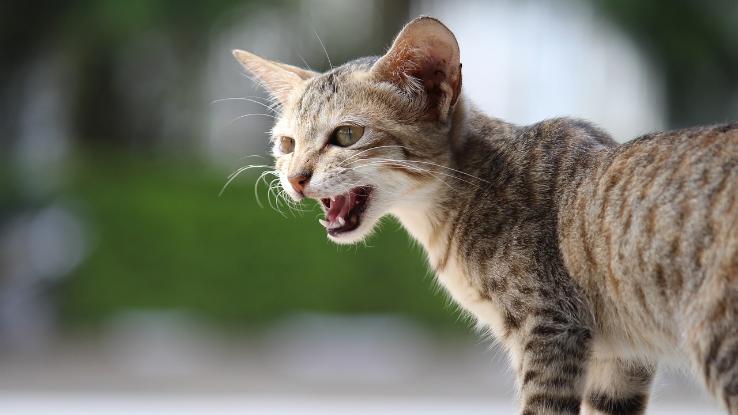
You will notice that cats use different meows to communicate different things. For instance, a short mew might be used as a greeting, while a drawn-out meow is often a demand. Other types of communications might include purrs, chirps, and even chatter. If you listen carefully, you will soon be able to tell what your kitty’s different noises mean to her.
Your Kitty Exposes Her Belly
Aw, isn’t it just the cutest when a kitty rolls over and shows you her belly? She must want ALL THE CUDDLES. Not so fast. Go in for that belly rub and you might end up with injured hands after kitty scratches you. While an exposed belly can mean many things, “pet me” is typically not one of them.

In the wild, a cat may roll onto its back as a defensive move: A supine position allows them to use all four paws and their teeth to attack. On the opposite end of the spectrum, an exposed belly can also mean that your kitty is feeling especially comfortable and trusting toward you.
Your Dog Won’t Stop Digging Holes
Every dog, in every single television show, does one thing as soon as they find a bone: They go out into the yard and bury it. Is that just a TV land cliche, or is there some truth to that fiction? Many dogs do have a strong digging instinct – and it used to be necessary for their survival.
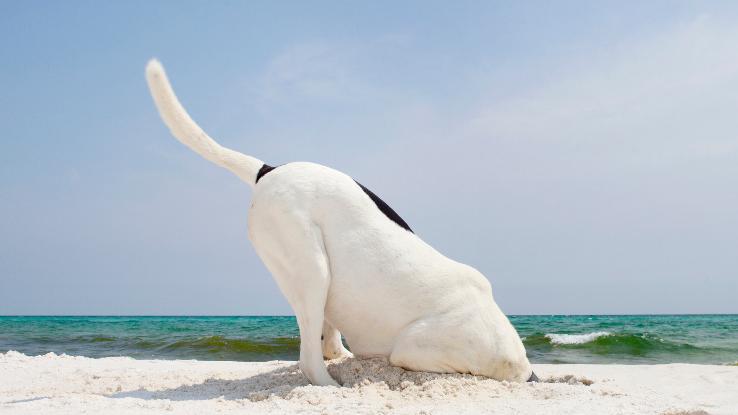
Back in the day, when your dog’s ancestors lived in the wild, it could be a struggle to find food. When a pooch did find something to eat, they wanted to make sure no other animals would get their filthy paws on it. The solution? Bury it where no one else could find it!
Your Dog Regurgitates Near Her Puppies
You may have noticed your female dog regurgitating her food near her pups. While a little bit gross, this is a completely normal behavior. Regurgitation is not the same as vomiting – while vomit comes from the stomach, regurgitated food comes from the esophagus (and, to puppies, it’s a crazy delicious treat).
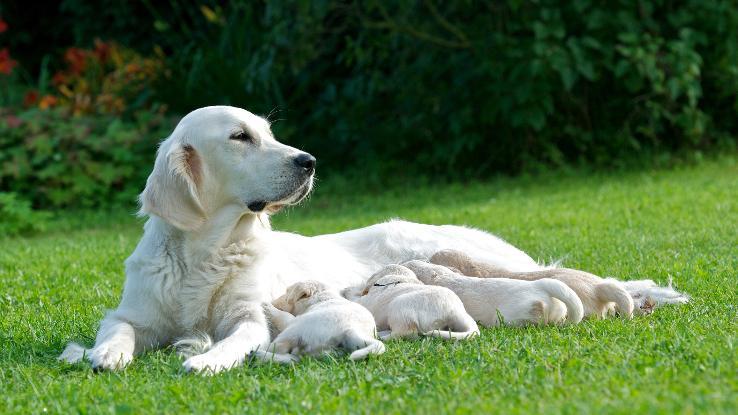
Experts say that mama dogs typically start regurgitating for their pups when they’re around four weeks old, and nearing weaning. The partially-digested food is not only nutritious but also helps the little ones learn how to eat solids safely. Not all dog breeds do it, but for those that do, it’s an important step in transitioning the little ones to “real” food.
Your Cat “Makes Biscuits” On Your Lap
When cats are babies, they knead their mothers’ bellies to stimulate milk production and feed. As adults, this is no longer necessary – yet many grown cats continue to “make biscuits”, and even suckle at the same time. Obviously, they’re not feeding (and probably not even hungry), so what gives?
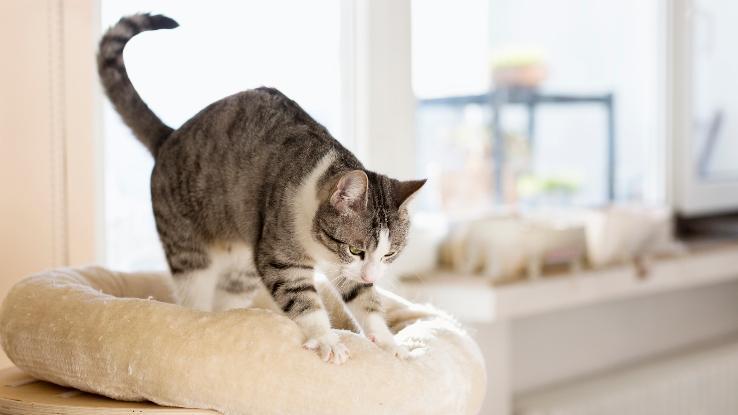
Scientists aren’t entirely sure why cats knead, although the most common hypothesis is that it’s a leftover behavior from kittenhood – a comfort thing, sort of like how some adult humans still sleep with a stuffed animal. Another thought is that perhaps it’s just another way for your cat to stretch his legs and feet after a long nap.
You Noticed That Wild Cats Don’t Knead
Your cat is constantly “making biscuits” on your belly, the couch, your bedroom pillows . . . pretty much everywhere. But have you noticed that wild cats (like lions and tigers) don’t do this? Why does your cat retain this baby-like behavior while his wild counterparts do not?
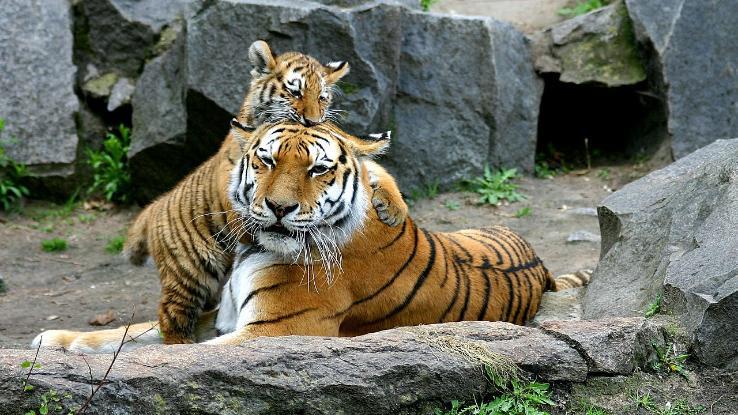
SciShow’s Hank Green says that because house cats were selected over thousands of years for their friendlier, less aggressive traits, they’ve “probably also held on to some of their more social, baby-like behavior, just because it serves them well when they’re around people.” In a nutshell: Your cat might knead just because they know you find it cute and it gets them attention.
Your Dog Walks In Circles Before Bed
Let’s face it: We all probably do some wacky stuff before bed. Maybe you can’t sleep without your noise machine on, or you have to visualize yourself on a peaceful beach in order to nod off. But nothing tops your dog’s zany antics: What’s with the way he has to circle around and around before he can lay down for bed?
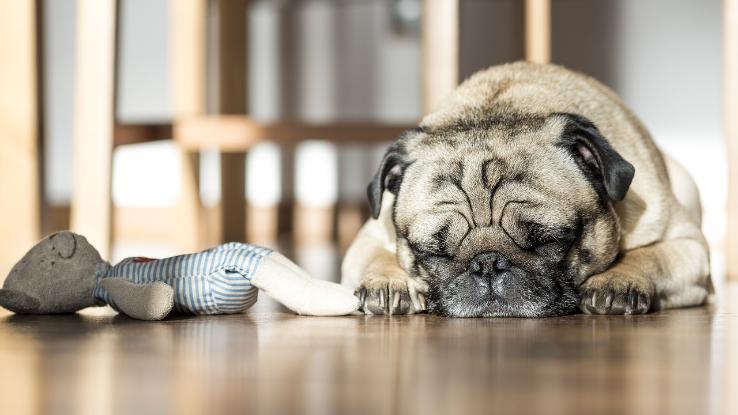
This odd behavior likely comes from prehistoric times. Back in the day, dogs didn’t have cushy beds or cozy blankies. They had to sleep on the hard ground. To make things a little comfier, they would walk in circles and stomp down the grass to make a “nest” where they could sleep.





